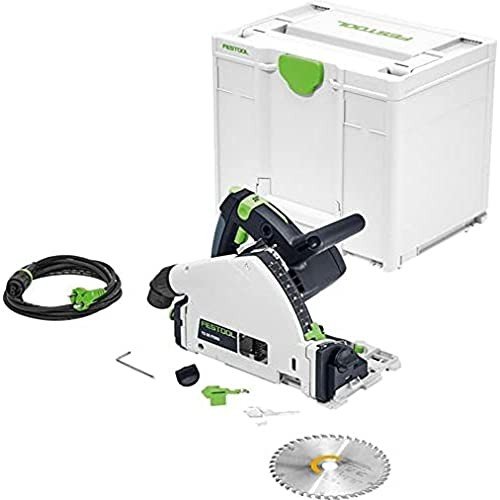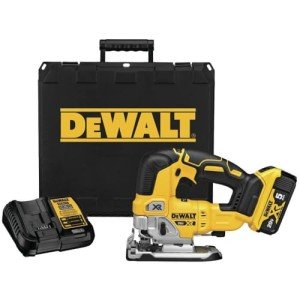Types of Power Tools
Power tools can be broadly categorized into two main types: corded electric tools and cordless (battery-powered) tools. Each type has its unique advantages and is suited for different scenarios.
Corded Electric Tools
Corded electric tools are powered by electricity through a cord that plugs into a power outlet. These tools are known for their consistent and powerful performance, making them ideal for heavy-duty and prolonged use. However, their mobility is limited by the length of the cord and the availability of power outlets. Common Corded Electric Tools:
Common Corded Electric Tools:
- Drills: Used for creating holes in various materials, including wood, metal, and plastic.
- Circular Saws: Ideal for making straight cuts in wood and other materials.
- Table Saws: Perfect for precise and repetitive cuts, often used in woodworking shops.
- Band Saws: Suitable for cutting curved and intricate shapes.
- Sanders: Used for smoothing surfaces, often in woodworking and metalworking.
- Grinders: Essential for grinding, polishing, and cutting metal and stone.
Cordless (Battery-Powered) Tools
Cordless tools are powered by rechargeable batteries, offering greater mobility and convenience. They are particularly useful for outdoor and remote projects where access to electricity is limited. However, they may have a shorter runtime and less power compared to their corded counterparts.Common Cordless Tools:
- Drill/Driver: Versatile tool for drilling holes and driving screws, available in various torque settings.
- Impact Driver: Provides high torque for driving screws and bolts, especially in tight spaces.
- Cordless Circular Saw: Portable and suitable for making straight cuts on the go.
- Cordless Jigsaw: Ideal for making curved and intricate cuts in various materials.
- Cordless Screwdriver: Perfect for light-duty tasks and maintenance.
- Cordless Angle Grinder: Useful for grinding and cutting in remote locations.
Features to Consider When Choosing Power Tools
When selecting power tools, it’s essential to consider several key features that can impact performance and usability:
1. Power and Torque
- Corded Tools: Generally offer higher power and torque, making them suitable for demanding tasks.
- Cordless Tools: Power and torque are typically lower but sufficient for most DIY and lighter professional tasks.
2. Battery Life and Charging Time
- Cordless Tools: Battery life and charging time are critical. Look for tools with longer battery life and shorter charging times.
- Corded Tools: Not applicable, as they are always connected to a power source.
3. Weight and Portability
- Corded Tools: Often heavier due to the motor and power cord.
- Cordless Tools: More lightweight and portable, making them easier to handle.
4. Durability and Build Quality
- Professional Use: Choose tools with robust build quality and durable materials.
- DIY Use: Tools with good build quality and a reasonable lifespan are suitable.
5. Safety Features
- Kickback Reduction: Tools designed to minimize kickback, reducing the risk of injury.
- Dust Collection Systems: Integrated dust collection systems help keep the workspace clean and safe.
- Overload Protection: Prevents the tool from overheating and extending its lifespan.
6. Ease of Use
- User-Friendly Controls: Tools with intuitive controls and ergonomic designs are easier to use.
- Variable Speed Settings: Allows for better control and precision in different materials.
7. Brand and Warranty
- Reputable Brands: Known for reliability and customer support.
- Warranty: Longer warranties often indicate higher quality and confidence in the product.
Benefits of Using Power Tools
1. Increased Efficiency
Power tools significantly reduce the time and effort required to complete tasks, making projects more efficient.
2. Enhanced Precision
Many power tools come with advanced features that ensure precise cuts and accurate drilling, leading to higher quality work.
3. Versatility
Power tools are versatile and can be used for a wide range of tasks, from basic repairs to complex construction projects.
4. Consistency
Automated and powered functions provide consistent results, which is crucial in professional settings.
5. Safety
Modern power tools are equipped with safety features that protect users from accidents and injuries.
How to Choose the Right Power Tool
Selecting the right power tool depends on the specific task and the user’s needs. Here are some steps to guide the decision-making process:
1. Identify the Task
- Drilling: Choose a drill or drill/driver.
- Cutting: Select a saw (circular, jigsaw, or band saw) based on the material and cut type.
- Sand: Opt for a sander (orbital, belt, or random orbit) depending on the surface and finish required.
- Nailing: Use a nail gun or hammer drill for fastening tasks.
2. Determine the Frequency of Use
- Frequent Use: Invest in high-quality, durable tools.
- Infrequent Use: Choose cost-effective tools that meet basic needs.
3. Consider the Work Environment
- Indoor Work: Corded tools might be more practical.
- Outdoor Work: Cordless tools offer more flexibility and convenience.
4. Evaluate Budget Constraints
- Professional Budget: Allocate more funds for premium tools.
- DIY Budget: Look for mid-range tools that balance quality and cost.
5. Read Reviews and Testimonials
- Online Reviews: Check websites, forums, and YouTube for user reviews and comparisons.
- Expert Testimonials: Consult professional magazines and industry experts for insights.
Popular Power Tool Brands
1. DeWalt
- Known For: High-performance tools, robust build quality, and a wide range of products.
- Popular Models: DeWalt 20V Max Cordless Drill, DeWalt DWS779 Sliding Compound Miter Saw.
2. Bosch
- Known For: Innovation, reliability, and precision.
- Popular Models: Bosch GSR180-LI 18V Cordless Drill, Bosch GFCI15D2 15-Amp Circuit Breaker.
3. Makita
- Known For: Durability, compact design, and powerful performance.
- Popular Models: Makita XPH08Z 18V LXT Cordless Impact Driver, Makita 5017NB 7-1/4-inch Circular Saw.
4. Milwaukee
- Known For: Heavy-duty tools designed for professional use.
- Popular Models: Milwaukee 2601-22 18V Cordless Drill, Milwaukee 6483-21 M18 Cordless Reciprocating Saw.
5. Black+Decker
- Known For: Affordable yet reliable tools suitable for DIY enthusiasts.
- Popular Models: Black+Decker 20V MAX Lithium Drill/Driver, Black+Decker 120V 15-Amp Corded Circular Saw.
FAQs About Power Tool Products
1. What is the difference between a drill and a driver?
- Answer: A drill is primarily used for creating holes in materials, while a driver is designed to drive screws and bolts. Many modern tools, like the drill/driver, combine both functions.
2. How do I maintain my power tools?
- Answer: Regular maintenance includes cleaning the tool, lubricating moving parts, checking for loose screws, and replacing worn-out components. Always refer to the manufacturer’s guidelines for specific maintenance instructions.
3. Are cordless tools as powerful as corded tools?
- Answer: While cordless tools have made significant advancements, they generally have less Power Tools Online and torque compared to corded tools. However, for most DIY and lighter professional tasks, cordless tools are highly effective.
4. What is the best way to store power tools?
- Answer: Store power tools in a dry, cool place to prevent rust and damage. Use tool boxes or cabinets to organize and protect them. For cordless tools, ensure batteries are fully charged or stored in a way that maintains their charge.
5. Can I use power tools in wet conditions?
- Answer: Most power tools are not designed for use in wet conditions. Using them in such environments can pose safety risks and damage the tool. Always use tools in dry conditions and follow safety guidelines.
Power tools are essential in the construction and DIY industries, offering increased efficiency, precision, and versatility. Whether you’re a professional contractor or a DIY enthusiast, choosing the right tool for the job is crucial. By considering factors such as power, battery life, weight, and safety, you can make informed decisions that enhance your productivity and ensure high-quality results. With the right power tool, any project, big or small, can be tackled with confidence and ease.
Table: Comparison of Popular Power Tools
Tool TypeCorded Electric ToolsCordless (Battery-Powered) ToolsPower and TorqueHigh, consistentLower, variableWeight and PortabilityHeavier, less portableLighter, highly portableDurabilityRobust, long-lastingDurable, but may wear fasterSafety FeaturesAdvanced, reliableUser-friendly, with safety locksEase of UseIntuitive controls, may need power outletErgonomic, easy to handleBest ForProfessional, heavy-duty tasksDIY, remote, and outdoor tasksPopular BrandsDeWalt, Bosch, MakitaMilwaukee, Black+Decker, Ryobi
List of Safety Tips for Using Power Tools
- Always wear protective gear (gloves, goggles, ear protection).
- Read the user manual before using any tool.
- Keep the workspace clean and organized.
- Use the right tool for the job.
- Check for loose parts and damaged cords before use.
- Never force the tool; if it’s not working, stop and check for issues.
- Store tools properly to prevent accidents and damage.
By following these guidelines and understanding the various types and features of power tools, users can ensure a safe and productive experience. Whether you’re a seasoned professional or a beginner DIYer, the right power tool can make all the difference in your projects.
Please login or Register to submit your answer